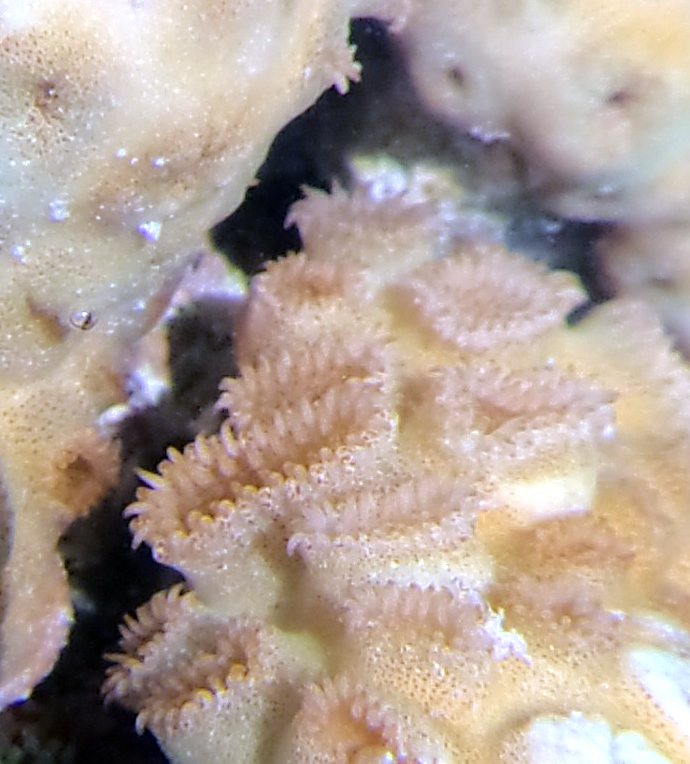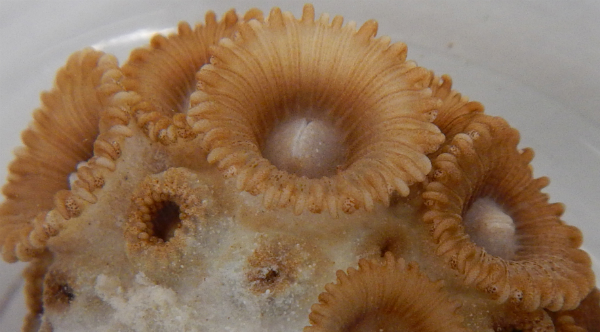 Life History & Behaviour Life History & Behaviour 
Life History
Palythoa caesia is an intertidal zoanthids (benthic cnidarians). They are sessile colonial marine invertebrates that lack medusa stage, they may sticked to the substratum by a wide colony base when they grow and many are epizoic, often use specific animal species like worm tubes as a holding surface (Borneman, 2004). P.caesia host zooxanthellae in the ectodermal tissue. Palythoa caesia can reproduce asexually as well as sexually.
 Feeding Feeding
Suspension feeders that rely on surrounding water current to deliver food (mostly plankton) towards the capture range of their tentacles. They also get most of their nutrients and energy through the symbiotic relationship with zooxanthellae and can absorb dissolved organic matter (Burnett, 2002; Tanner, 2002). They can also prey on small animal with their tentacles. Nematocytes present on tentacles can discharge a toxins call palytoxin to paralyze their prey. Once paralyzed, tentacles then bend toward the oral disc and push prey into the mouth, whereas plankton are transported by cilia to the tip of tentacles, which will then insert into mouth (Ruppert et.al., 2004).
Reproduction
According to a closely related species,P.tuberculose, P.caesia are presumably hermaphroditic (Polak et.al, 2011). P.caesia can reproduce asexually as well as sexually. The primary modes is usually asexual reproduction through fission (edge fission), fragmentation, and budding of polyps (Acosta & Gonzalea., 2007). They are usually female because of the longer development time of the oocytes, and in the late season some colonies were male only. Female polyps are predominant from November to May and male from May to October (Ryland, 1997).
Sexual reproduction for this species is usually broadcast spawning, they normally reproduce during mass spawning event, which determined to be 3 - 5 days after the full moon night (Burnett, 1994). Fertilization is external in seawater. Their larva type is probably zoanthella and their recruitment rate are very low (Polak et.al., 2011).
 Aggression Aggression
Palythoa caesia are semi-aggressive, they have the ability to sting other marine organism. They also have a fast growth rate which allow them to grow over other sessile animal and can be very aggressive to stony and soft corals (Borneman, 2004).
Palythoa contain very toxic chemicals called palytoxin, that are dangerous to both reef organisms and humans (Borneman, 2004).
Defences
They can retract into the coenenchyme and secrete mucus or discharge nematocysts when they feel threaten. These mucus and nematocysts contain palytoxin that produce by all species of Palythoa. Palytoxin is one of the most dangerous toxin in the world. Palytoxin is a very potent defense mechanism which can avoid other corals from overgrowing the colony and can prevent predator get near the colony. The video below shows the P.caesia secrete mucus in order to prevent the abalone get near the colony.
|